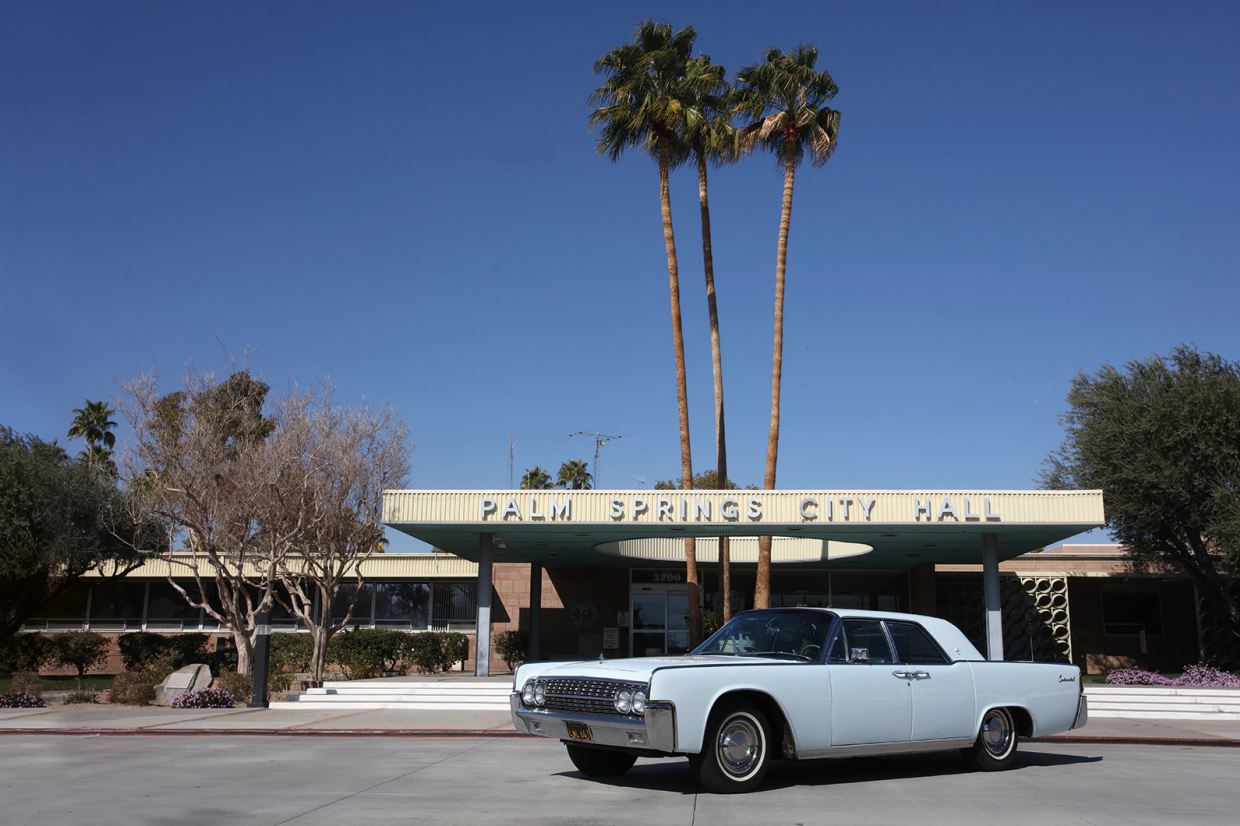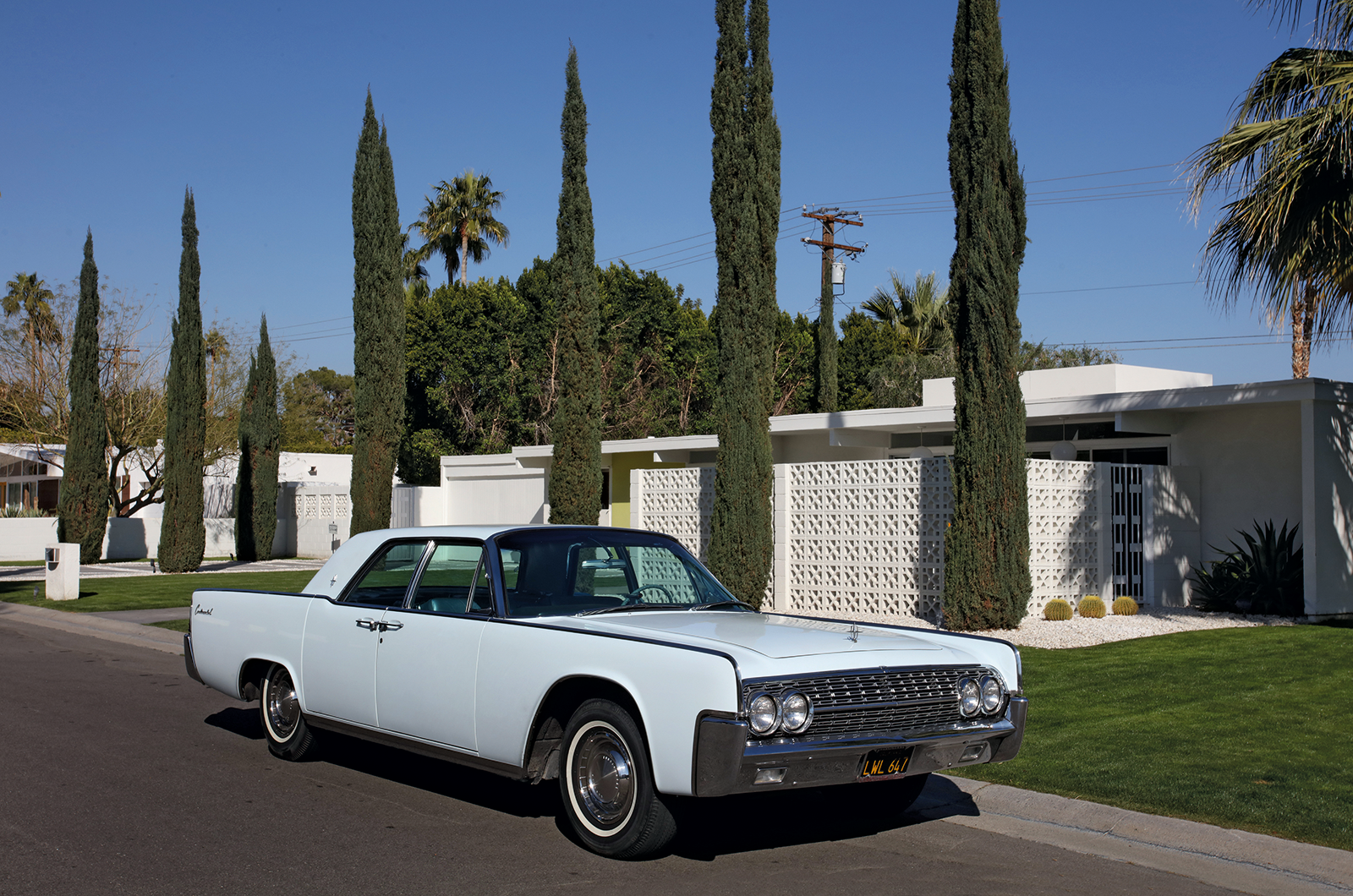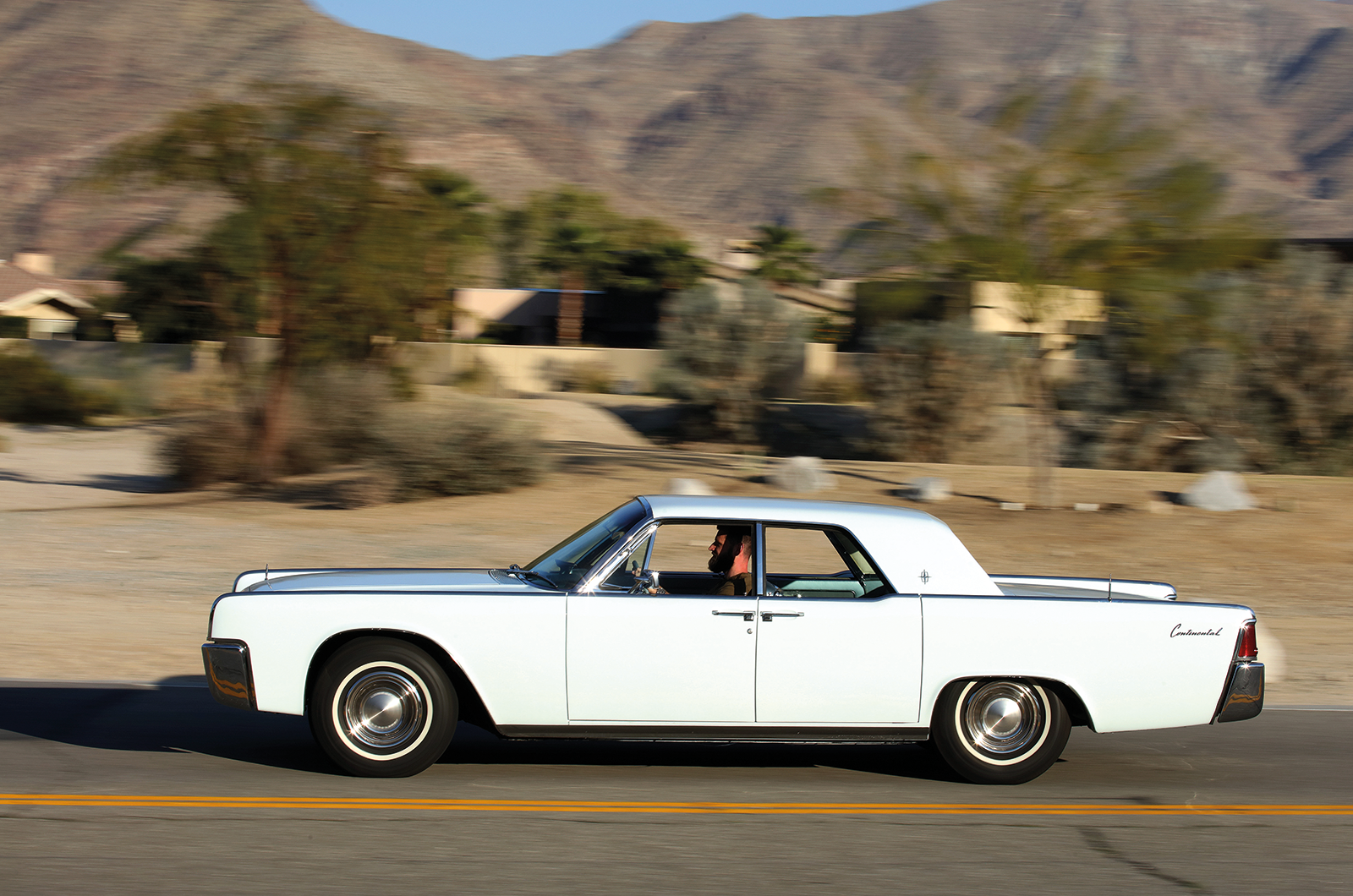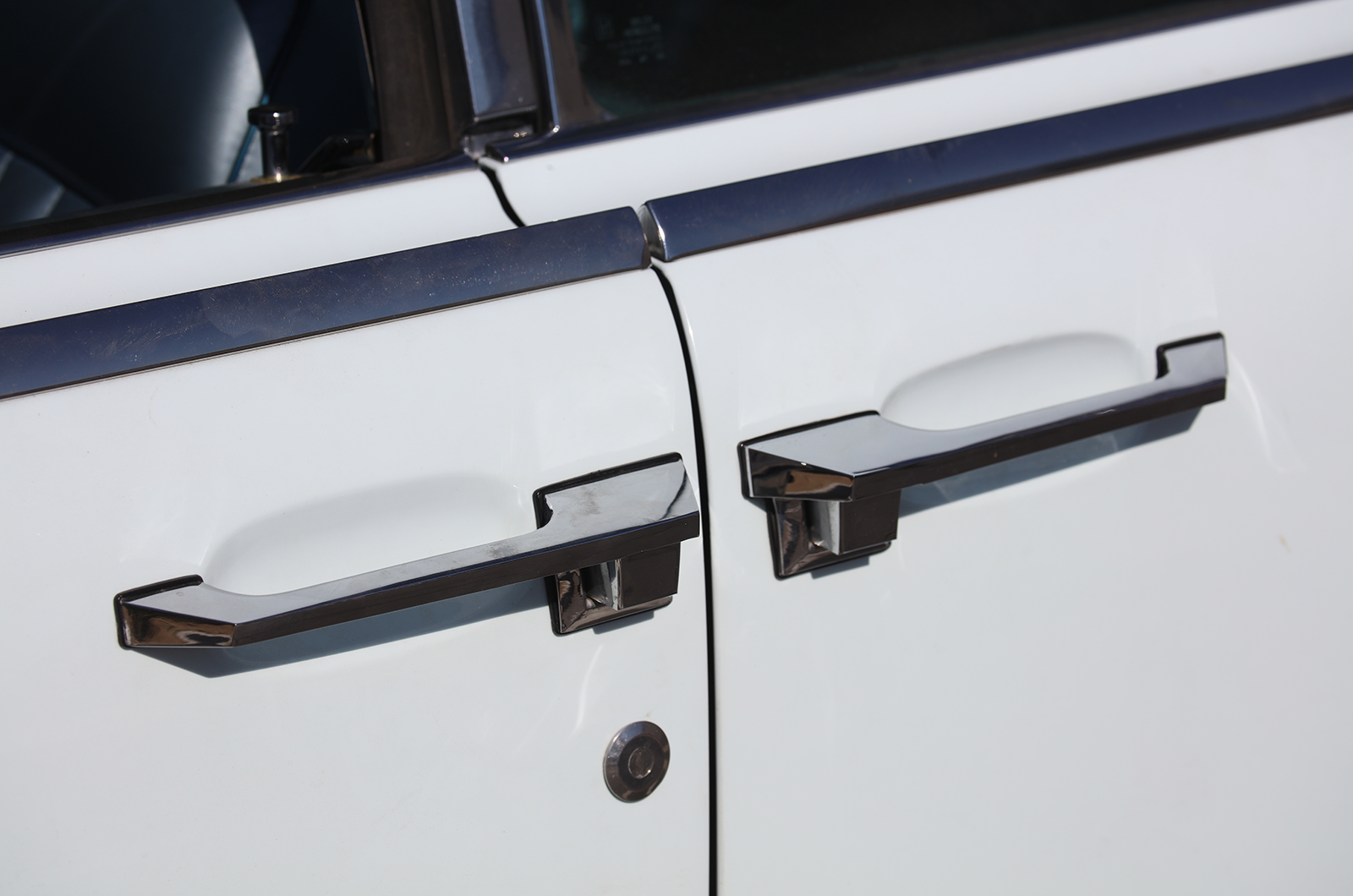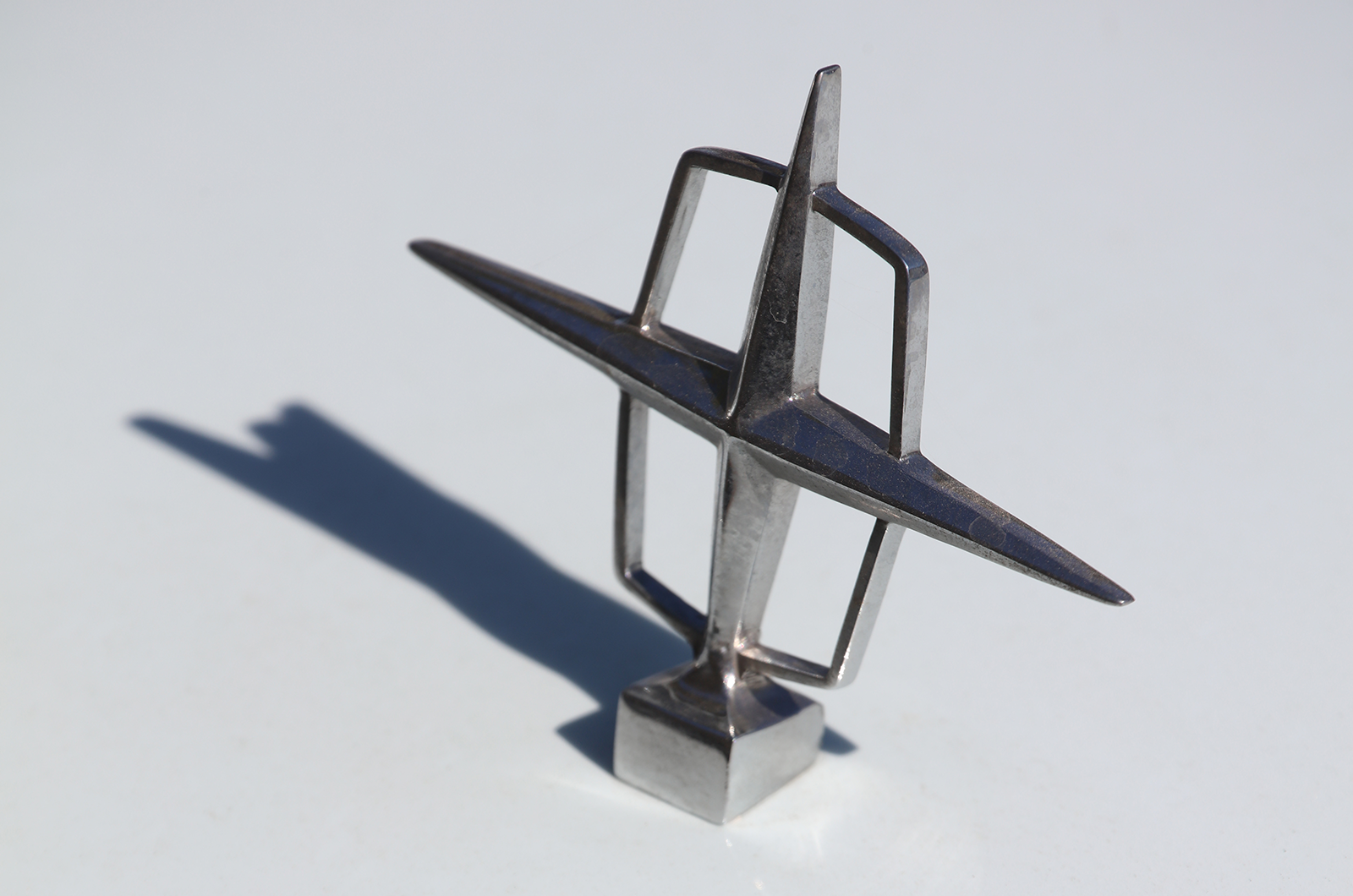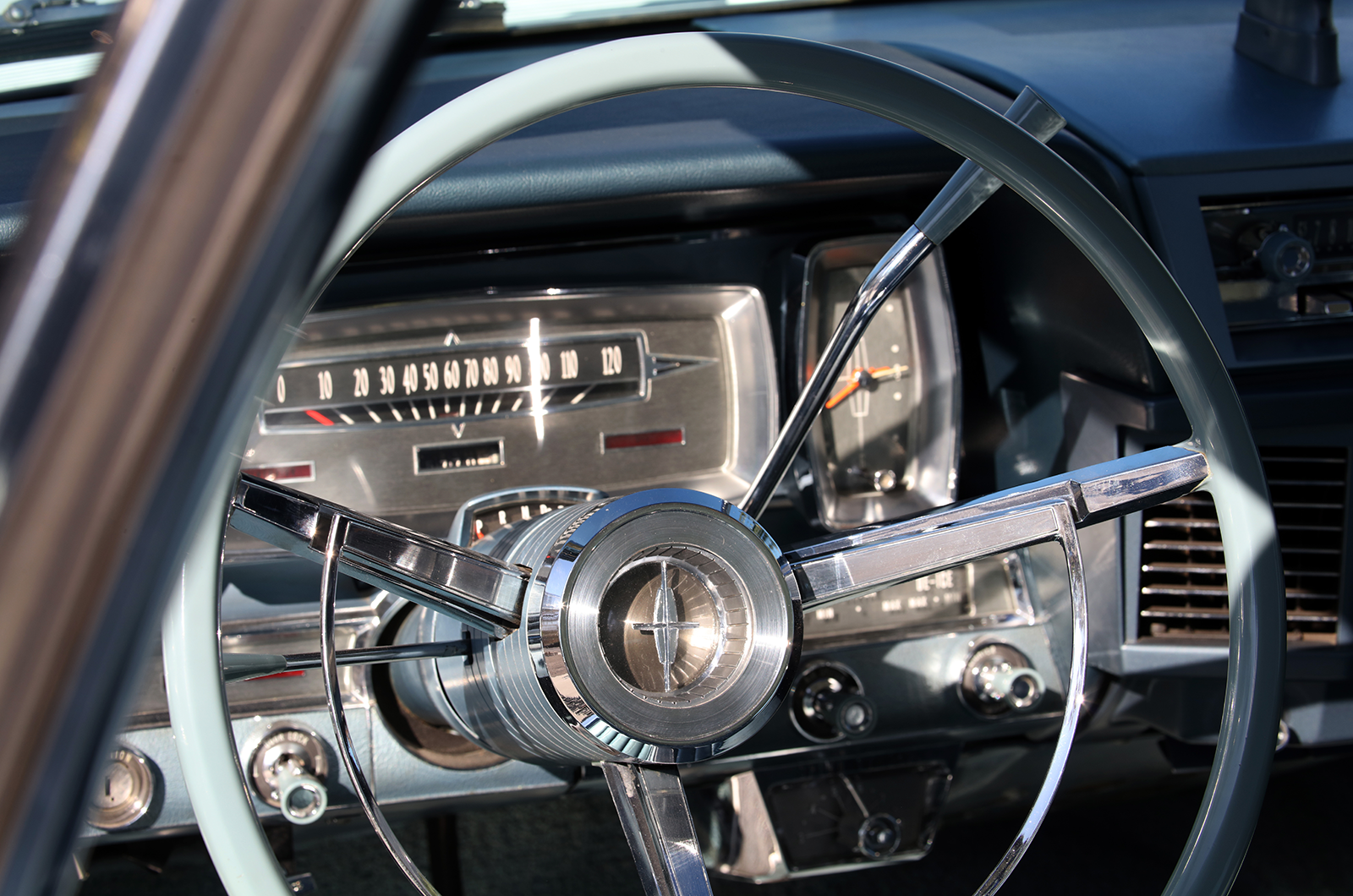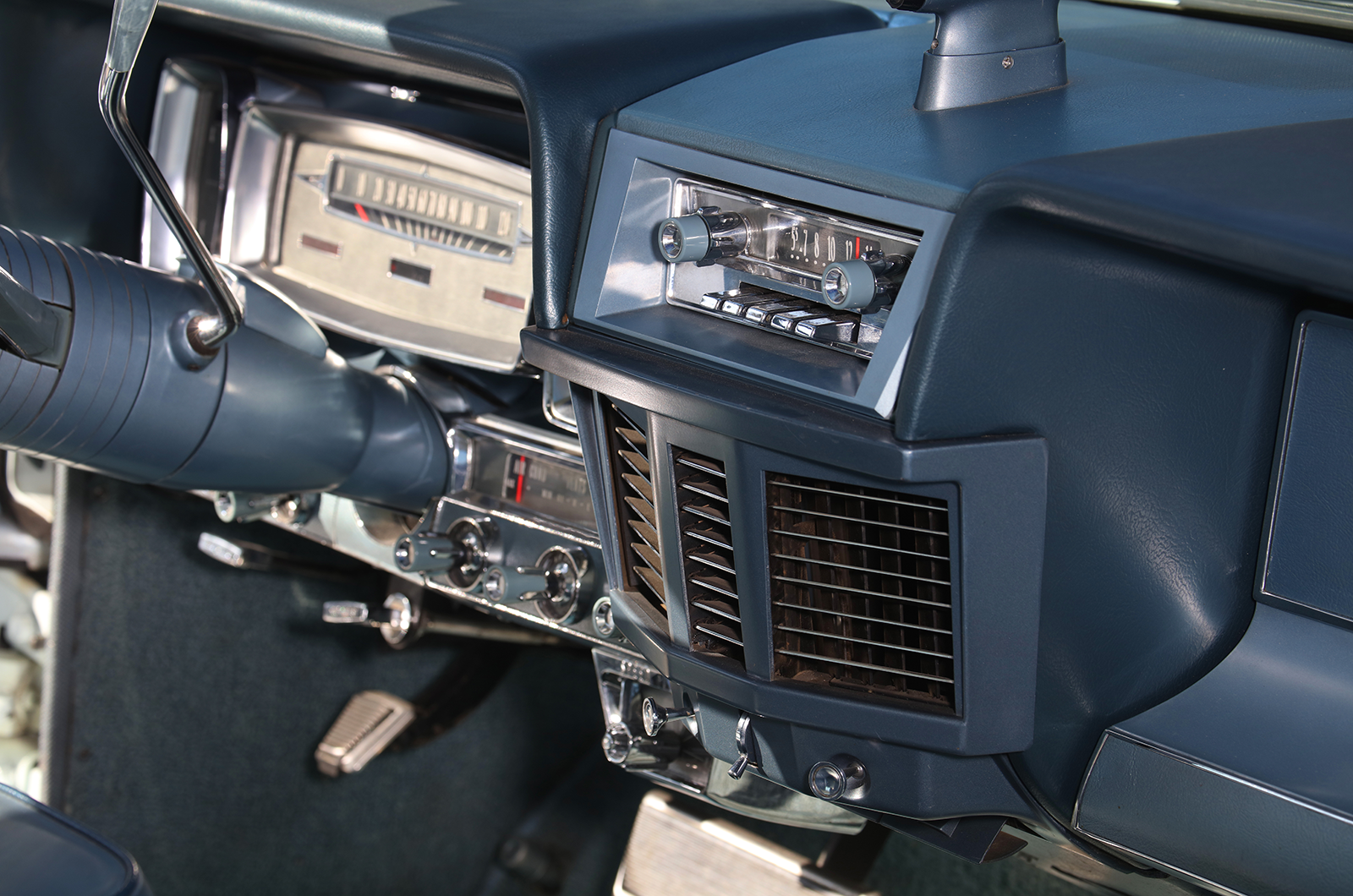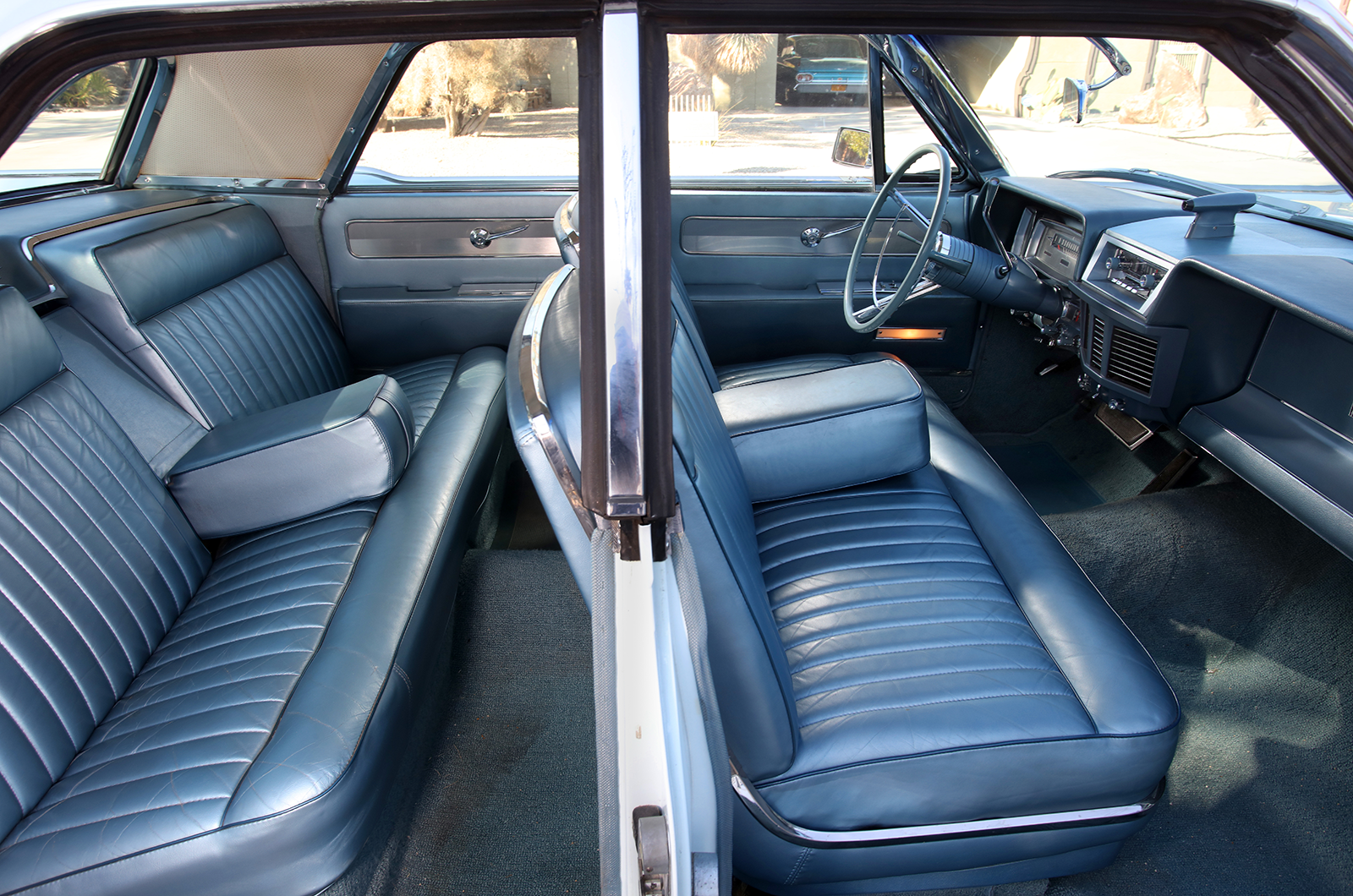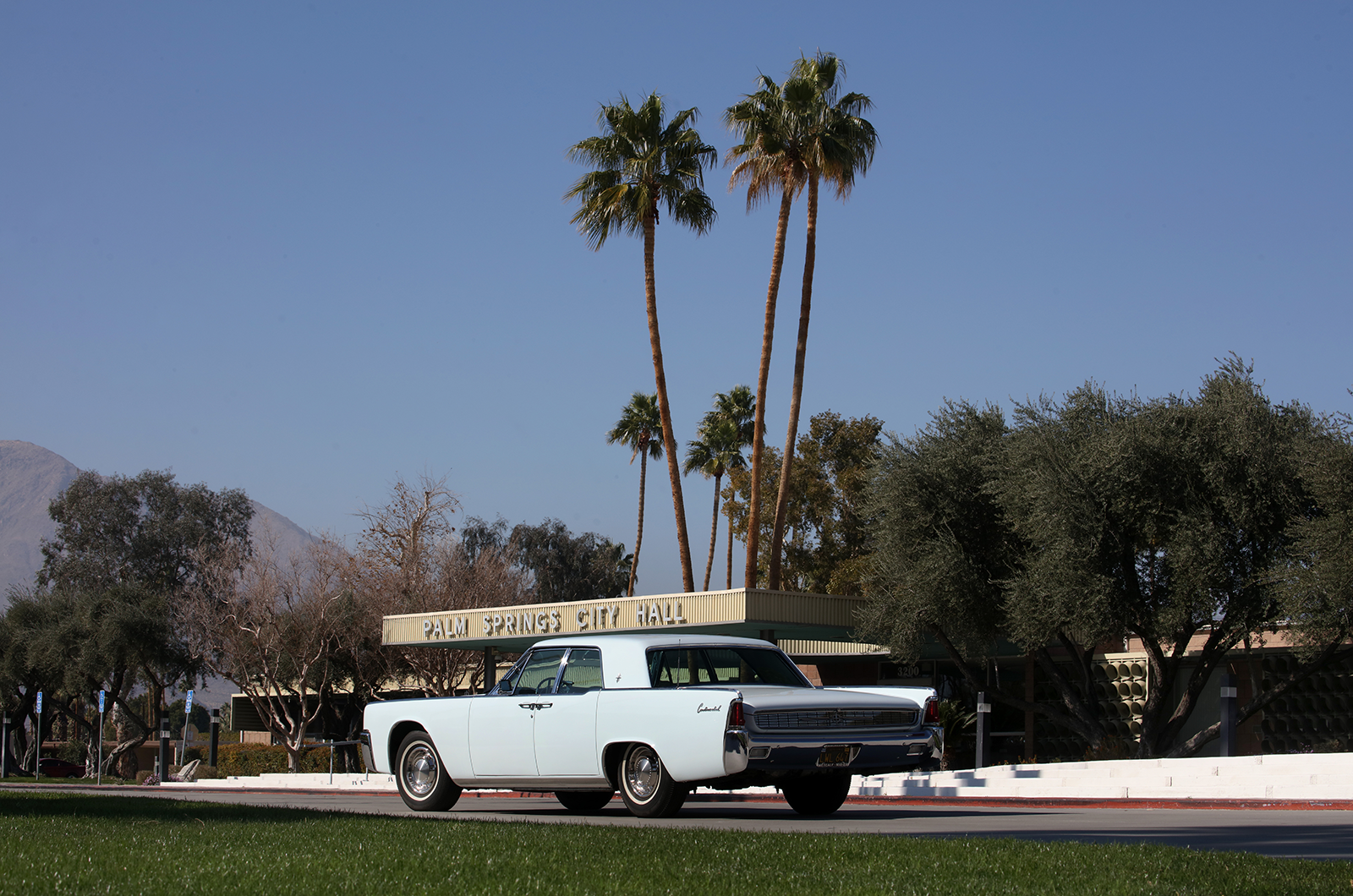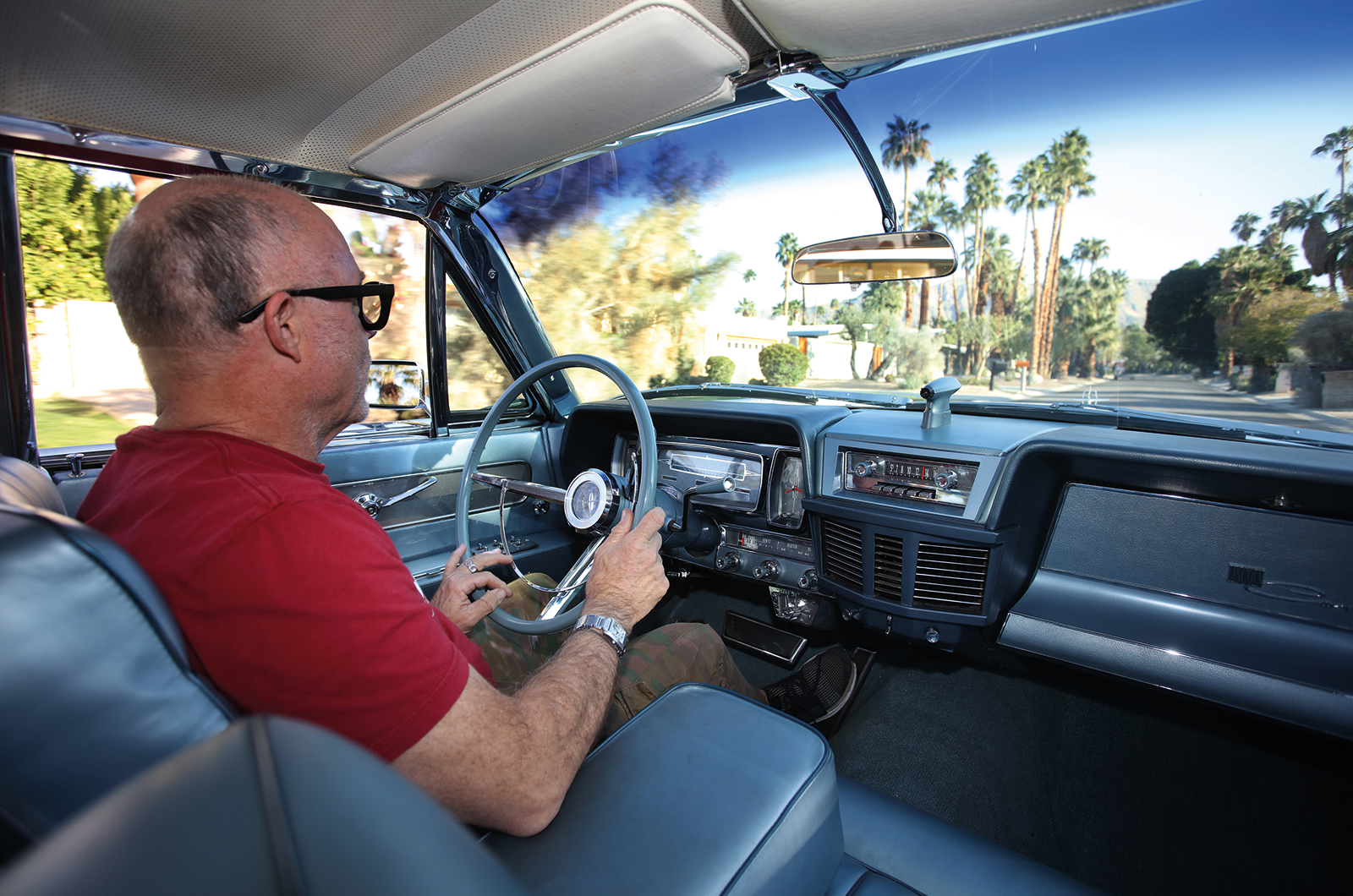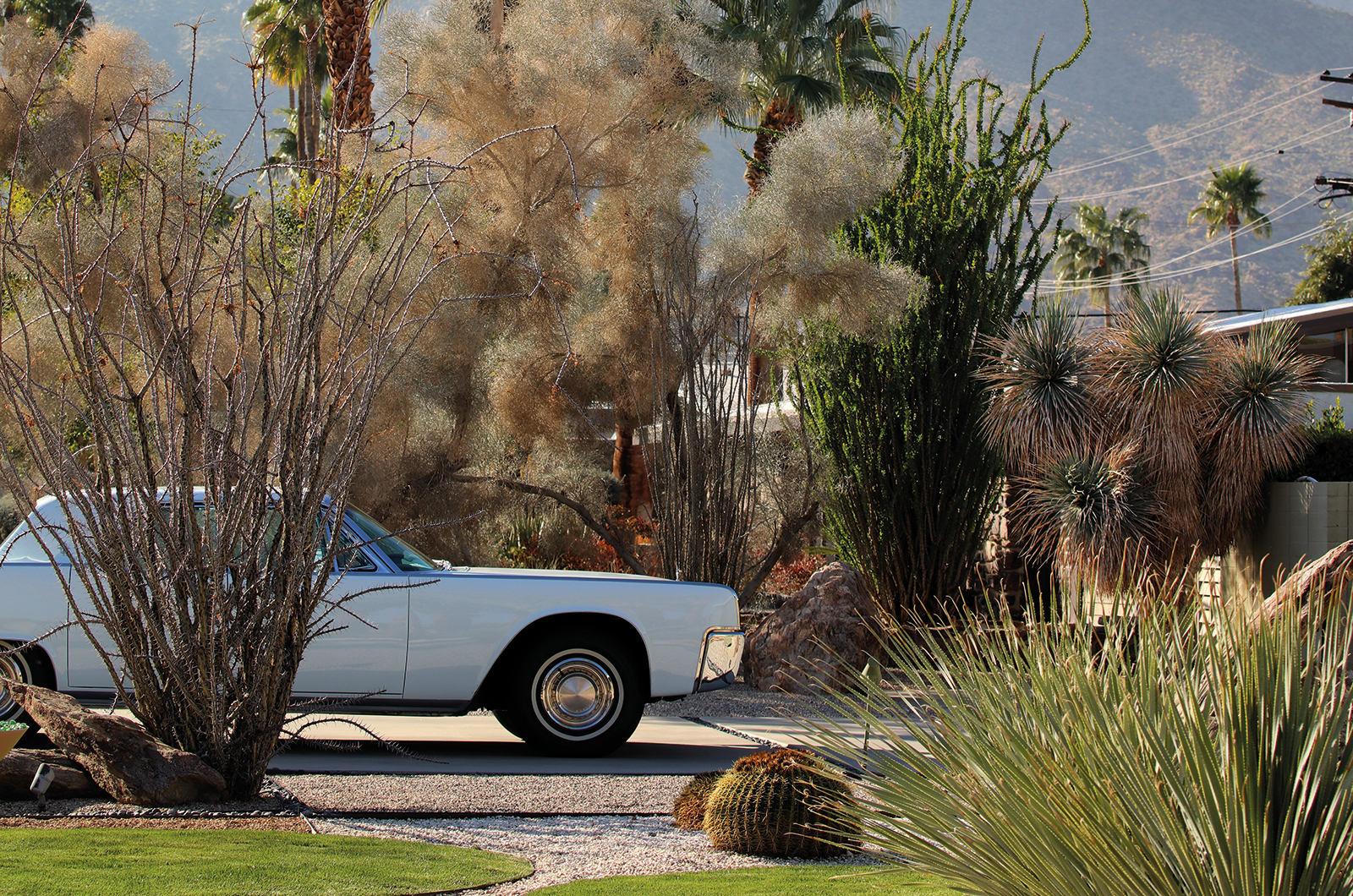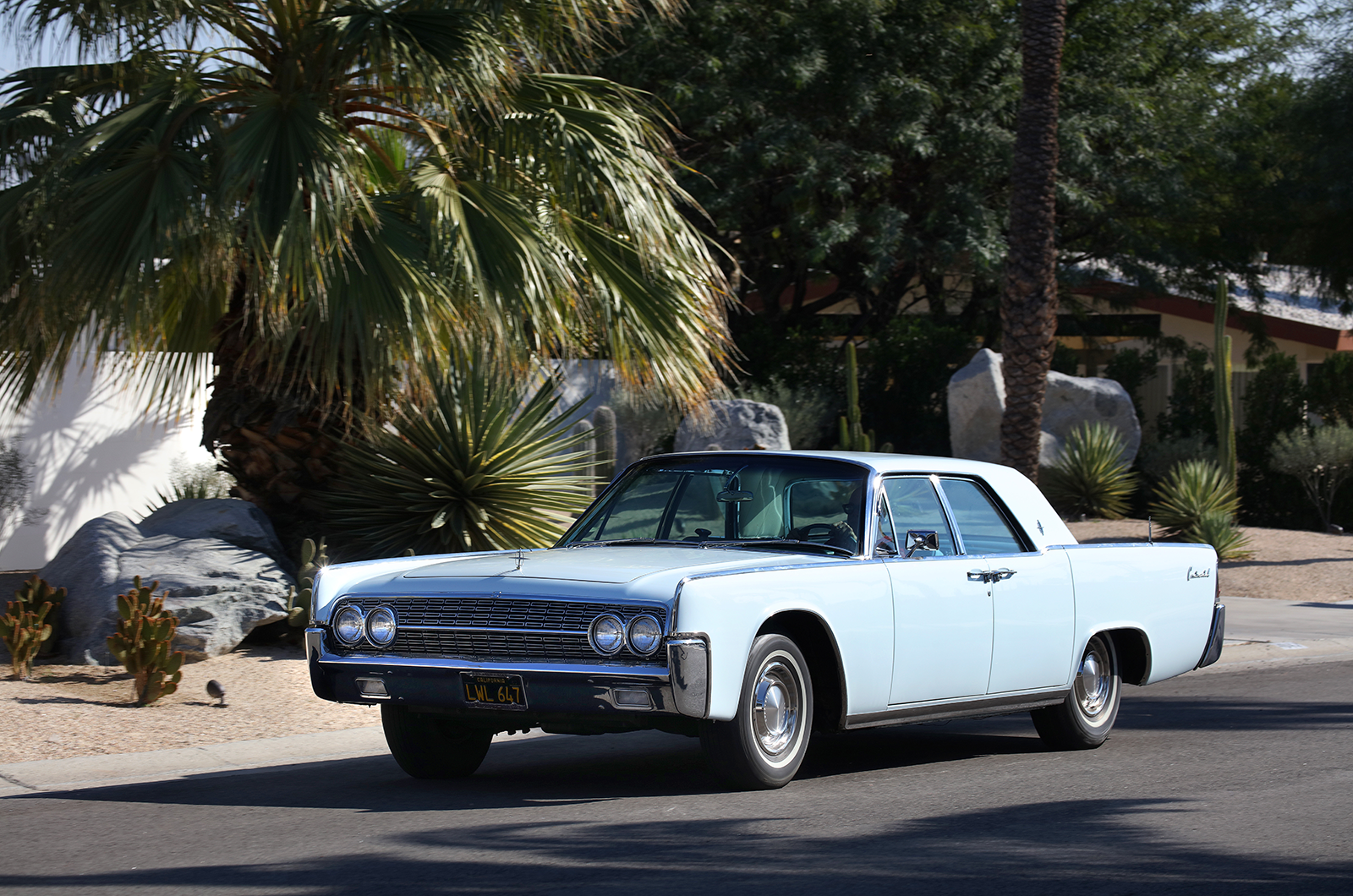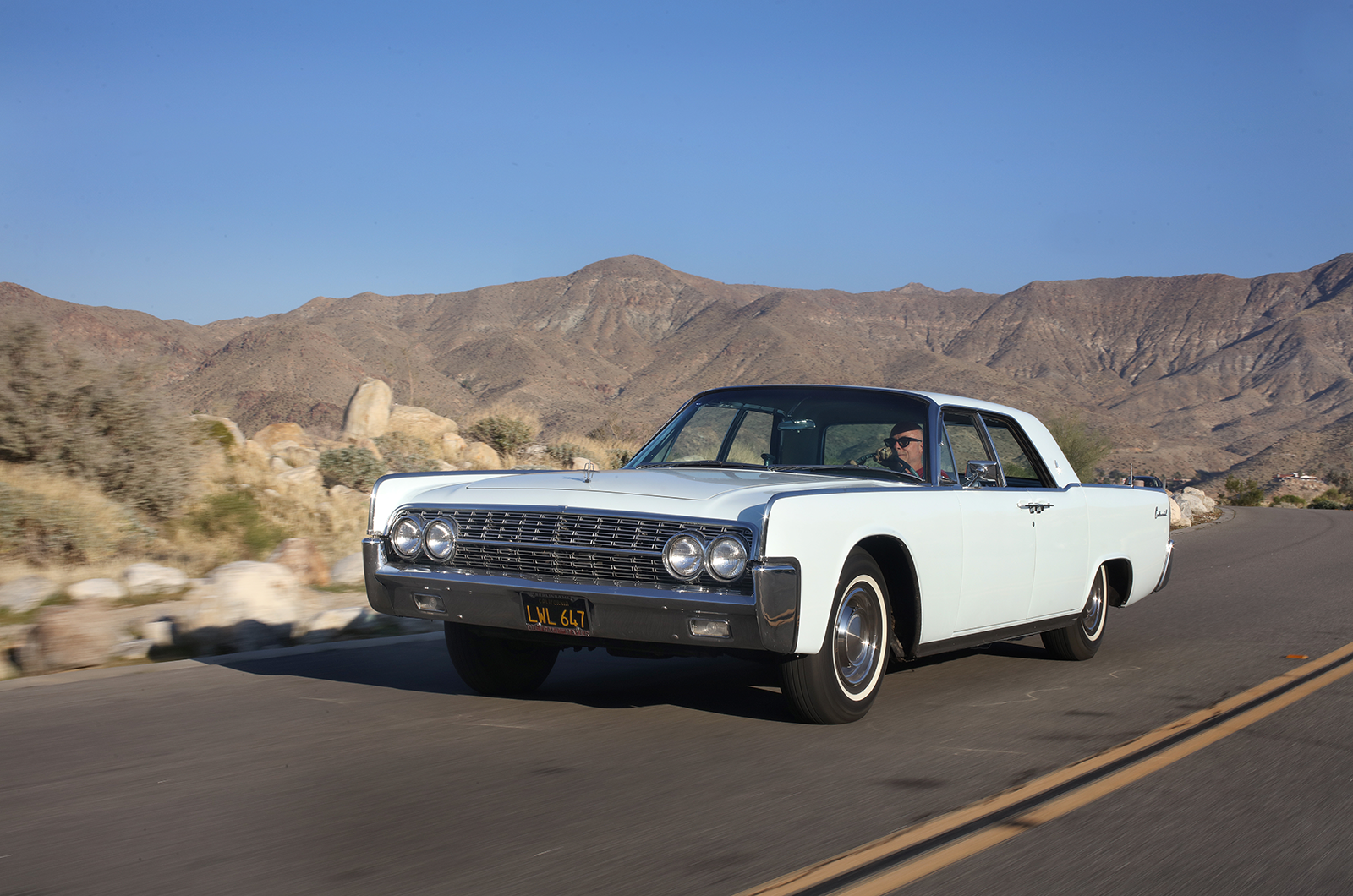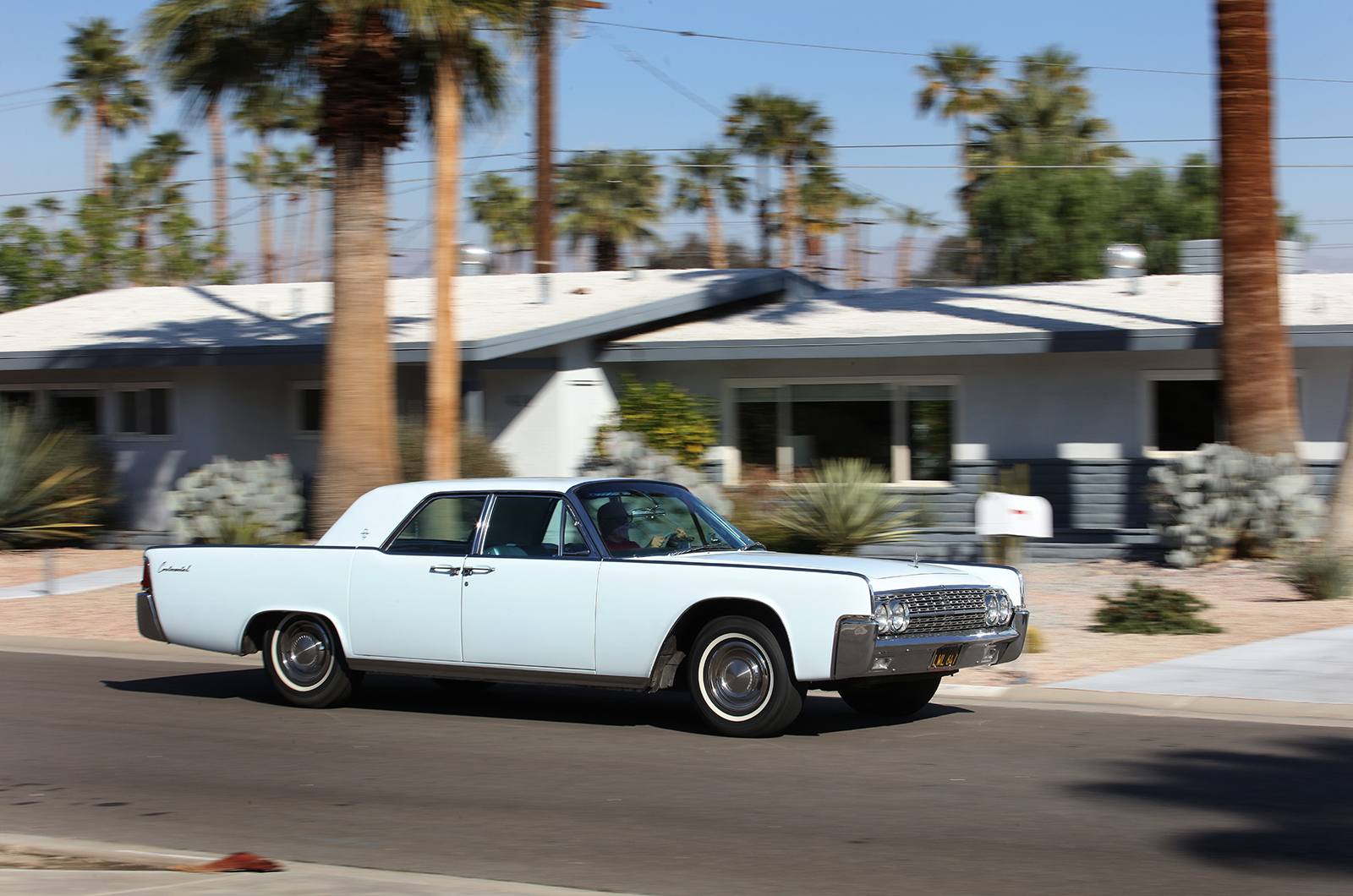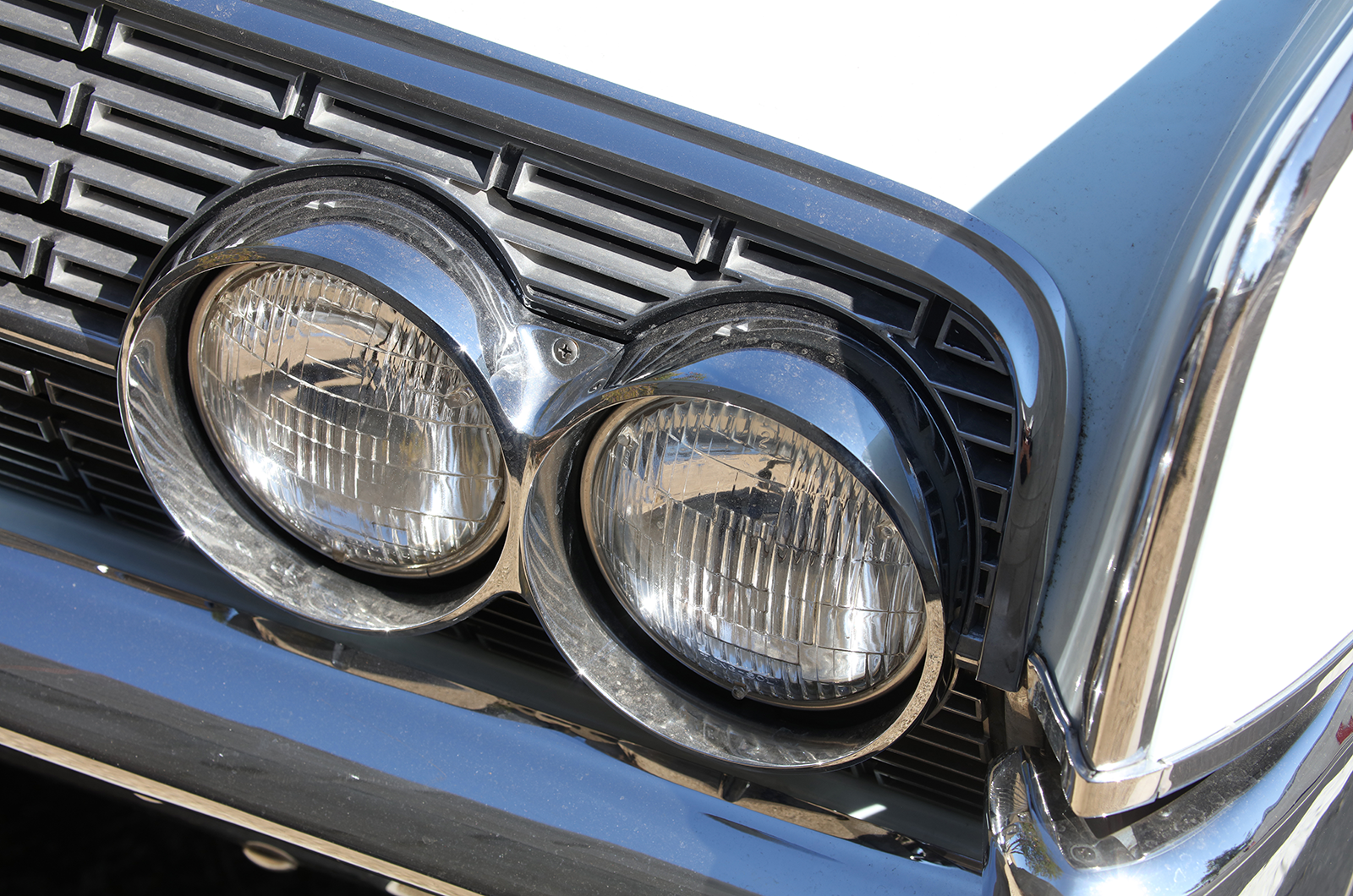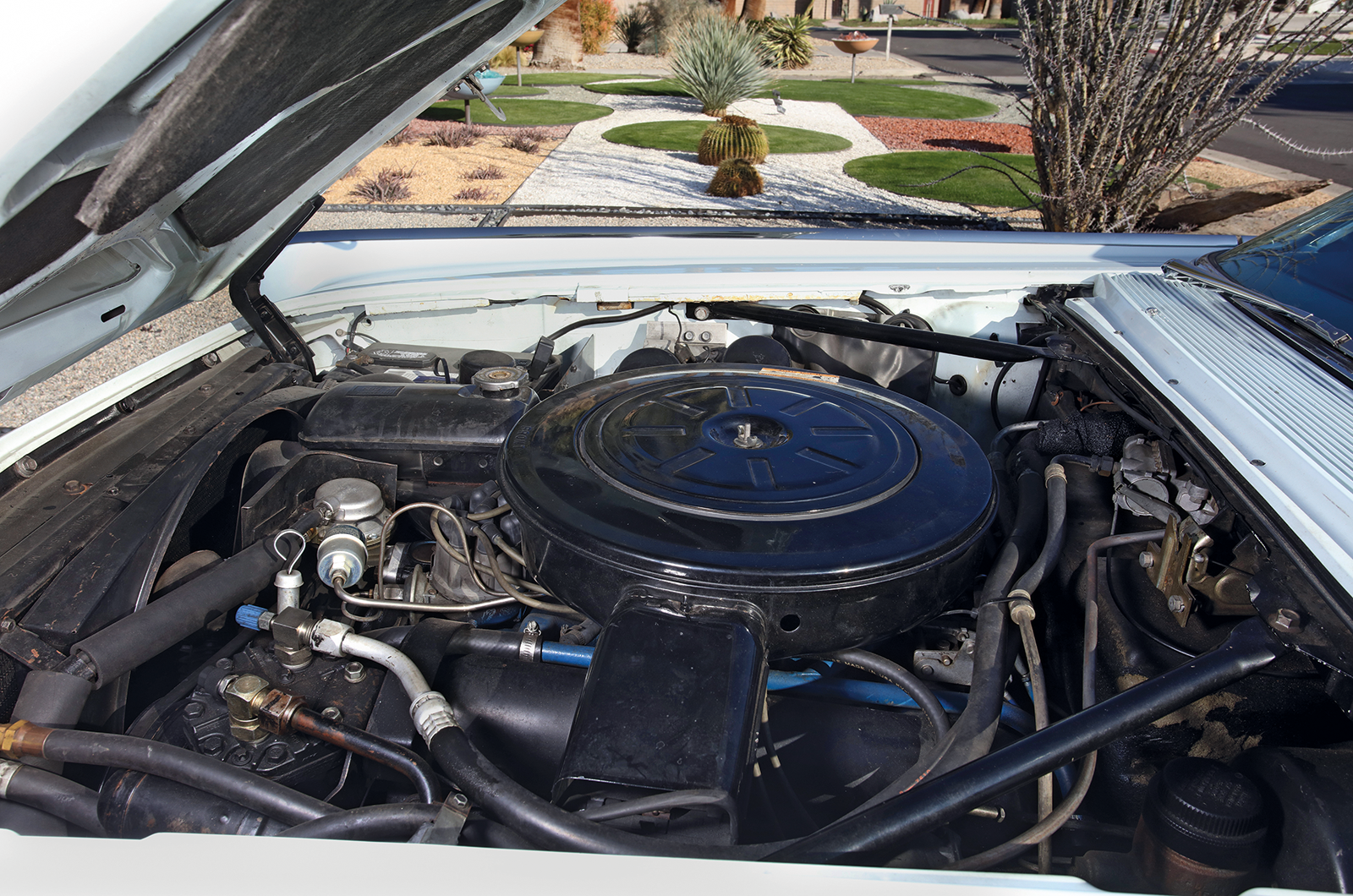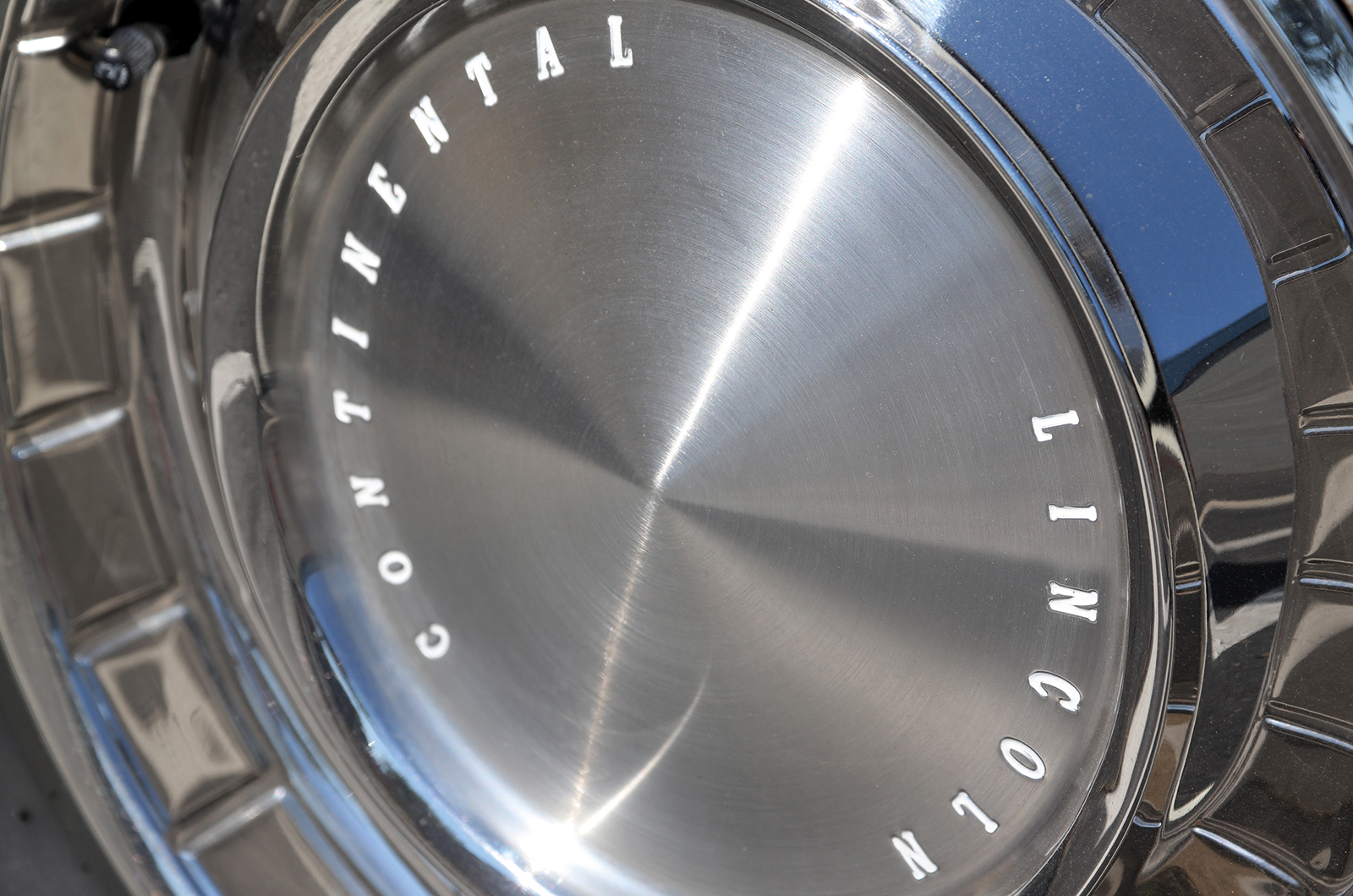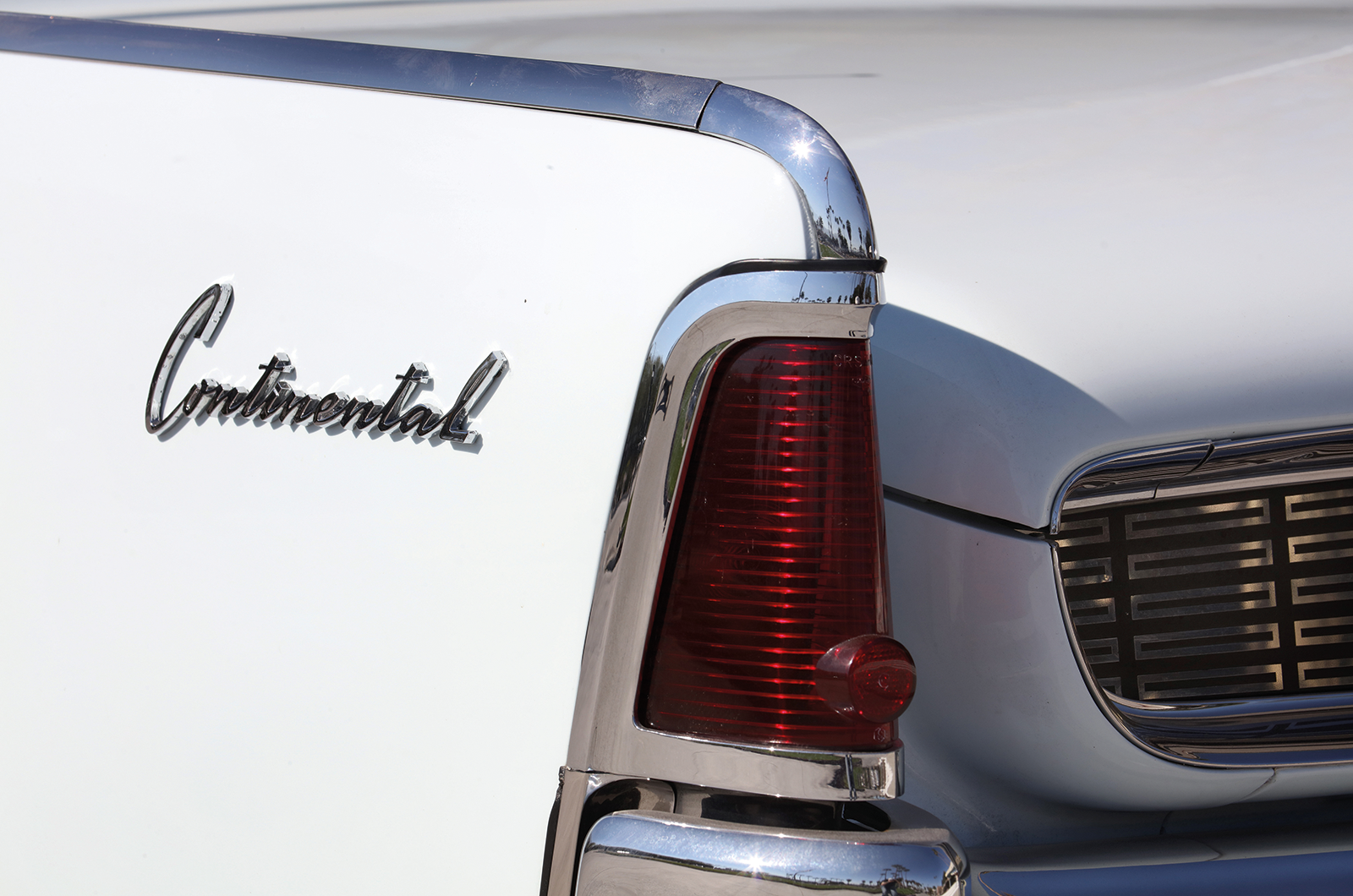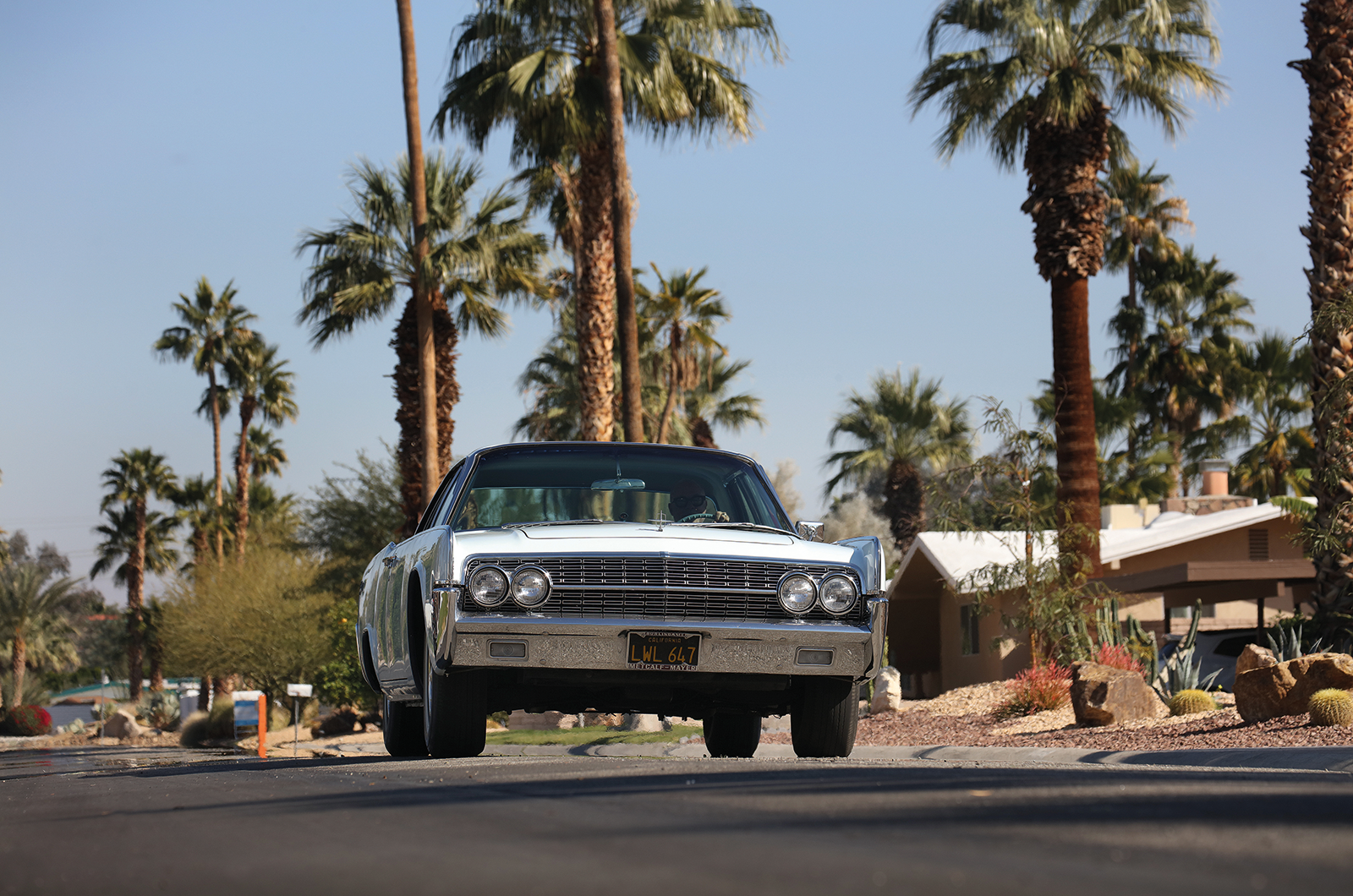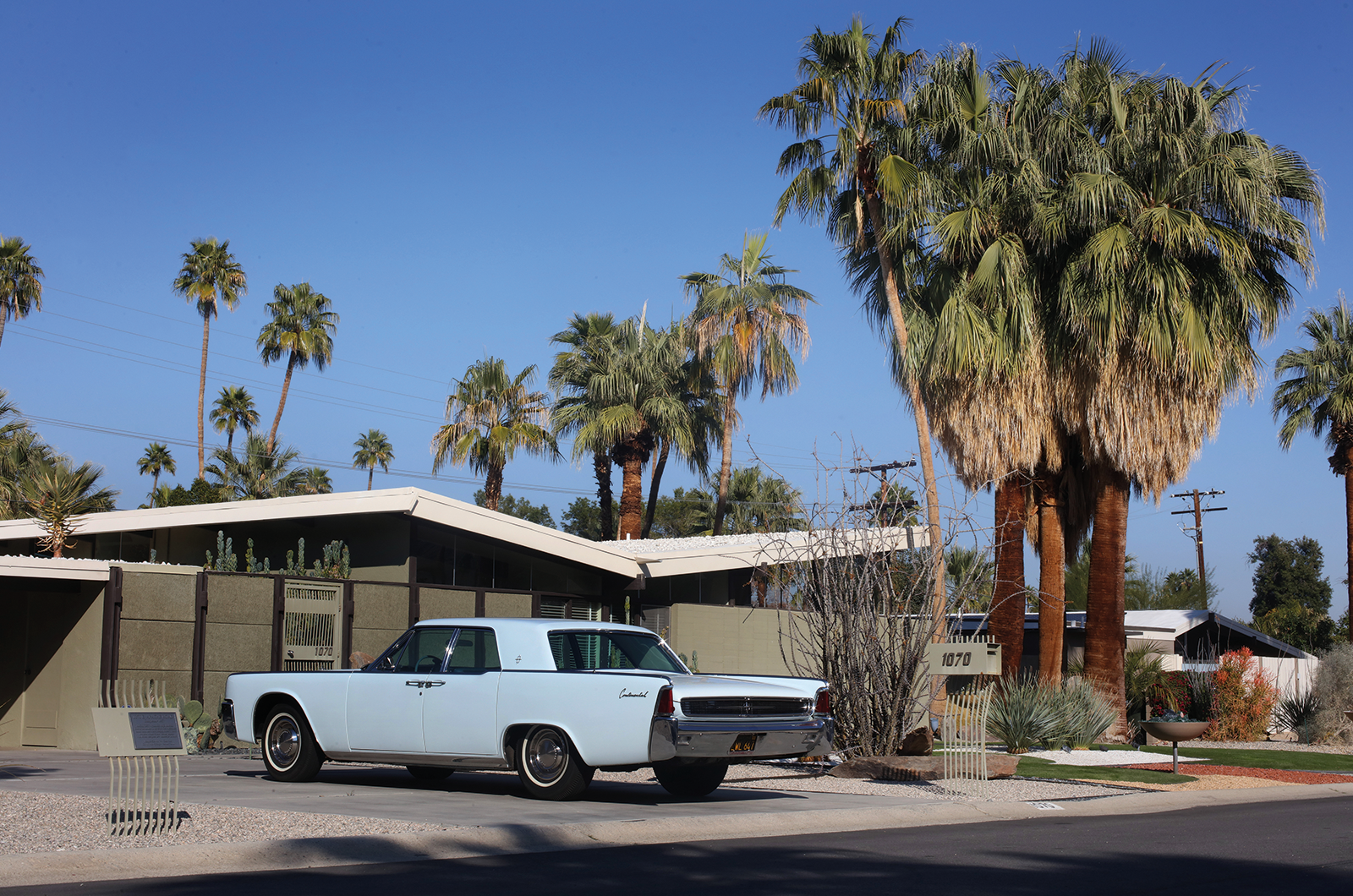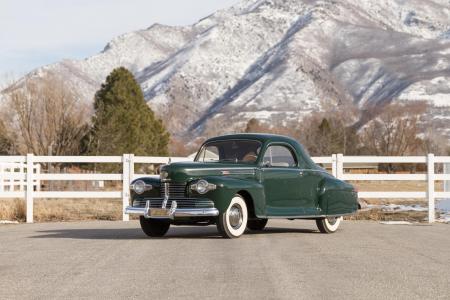Mad Men has inspired a resurgence in interest for Modernist design, and though Don Draper was drawn in by a Coupe de Ville rather than the Continental, it’s difficult not to feel like a suited-and-booted Madison Avenue executive while cruising through the valley in the Lincoln.
Our meandering route takes us back through town and past some of the motels that have been a fixture of the landscape since before ‘our’ Continental was built, and it’s remarkable how easy such a large car is to navigate through these streets.
The combination of vague steering and intrusive power assistance would seem terrifying in almost any other car, but here it just serves to heave the vast Continental around, asking little more of you than to keep one finger on the wheel.
And that lazy V8 is a dream, smooth as silk even when you give it some gas, lifting its skirts with surprising enthusiasm as the mascot rises in response.
Almost all effort seems removed, bar the gentle massaging of the wheel to keep the big boat heading in broadly the right direction – never much of a chore given the graph-paper-like layout of US city routes.
Before long we arrive at our final stop, Menrad’s house in the beautiful Twin Palms estate – so named for the pair of trees planted in each front garden.
“It was built in 1957, designed by the architectural firm Palmer & Krisel,” says Menrad, walking up the driveway and passing a carport housing a ’61 Cadillac.
“The houses were mostly vacation homes and weren’t really meant to be lived in year-round. Palm Springs had a permanent population of around 8000 at that time and the place emptied out in the summer.
“The houses weren’t particularly cheap –it cost about $32,000, when you could get a similar home in Los Angeles, at least in the suburbs, for around $11,000.
“I bought my house in 1999 and did the renovation about six years later. I was lucky, it must have been a second home because they hadn’t made many changes. The only thing they had altered was the kitchen; the bathrooms were still original and the glass hadn’t been messed with.
“The restoration mainly involved returning the kitchen to what it was like in period and cleaning stuff up; there were all kinds of pipes and wires all over the outside.
“I discovered the original colour of the house in the carport, in an area that had never been painted over.”
“Before I bought the house I had restored a 1968 Corvette,” he goes on, “and in the Corvette world they’re very particular.
“They created that whole ‘survivor’ series of perfect cars that are factory correct, even down to the markings on the bolt heads.
“I was fascinated by that standard of restoration, so my goal with the house was similar, to make it feel like it would have been when you wanted to first buy it in 1957.”
Much like the Modernist Continental, mid-century architecture such as Menrad’s Krisel home has only been properly appreciated with the passing of time.
“Many really great buildings were demolished, having been torn down and destroyed in the hope that someone might buy the land and build something new,” reflects Menrad.
It is a fate familiar for once underappreciated classics such as the Lincoln.
As we head back to the city, thoughts drift to the UK’s Modernist past and the 1961 Markham Moor service station in particular.
After the ignominy of being a Little Chef in the ’80s, its wild hyperbolic paraboloid concrete roof now lies in partial ruin.
Out of nowhere, its twin rises from the haze: the Albert Frey-designed Tramway gas station, which I later discover has been restored to stand sentry over the entrance to the town.
As Modernism makes a comeback, there’s no better place to be than Palm Springs – especially if you happen to be behind the wheel of a1962 Lincoln Continental.
Images: James Mann
Thanks to Chris Menrad, Palm Springs Modern Committee
Factfile
Lincoln Continental
- Sold/number built 1961-’69/334,345 (fourth generation)
- Construction steel unitary
- Engine all-iron, ohv 7045cc V8 with Carter two-barrel carburettor
- Max power 300bhp @ 4100rpm
- Max torque 465lb ft @ 2100rpm
- Transmission three-speed auto, RWD
- Suspension: front independent, by wishbones, coil springs rear live axle, semi-elliptic leaf springs; telescopic dampers f/r
- Steering power-assisted worm and roller
- Brakes drums, with servo
- Length 18ft (5494mm)
- Width 6ft 6in (1946mm)
- Height 4ft 6in (1372mm)
- Wheelbase 10ft 3in (3124mm)
- Weight 5055lb (2293kg)
- 0-60mph 10.4 secs
- Top speed 120mph
- Mpg 12
- Price new $6292
- Price now £9-45,000*
*Prices correct at date of publication
READ MORE
Queen of the Desert: Golden Sahara II
Citroën SM and Oldsmobile Toronado: groundbreaking GTs
Why the allure of the Countach is much more than skin deep
Greg MacLeman
Greg MacLeman is a contributor to and former Features Editor of Classic & Sports Car, and drives a restored and uprated 1974 Triumph 2500TC
